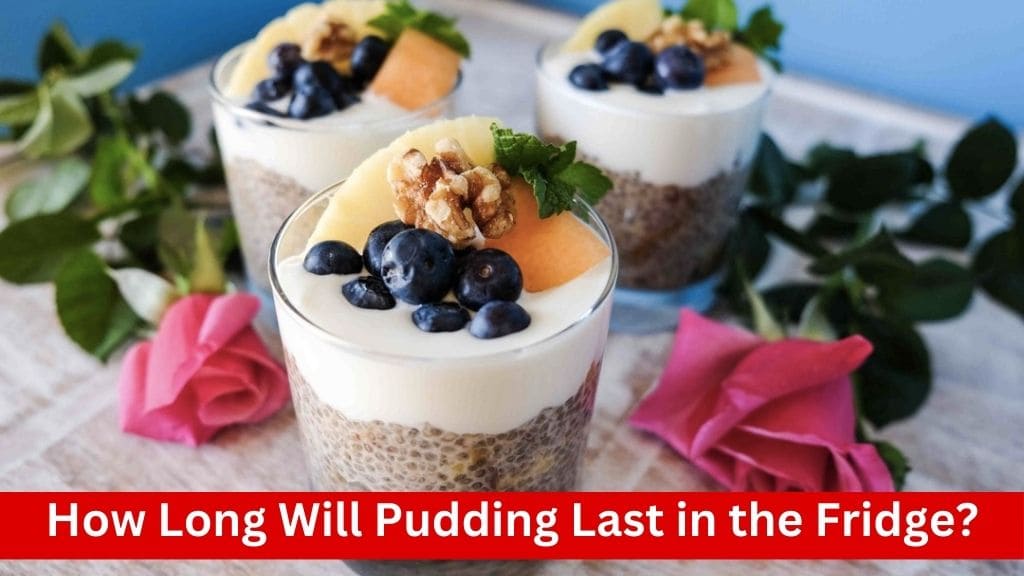Pudding is a delightful dessert enjoyed by many, but it’s essential to know how long it can be safely stored in the fridge to maintain its freshness and quality. In this comprehensive guide, we’ll delve into the factors that affect the shelf life of pudding in the refrigerator and provide tips on how to extend its longevity.
Pudding is a creamy dessert typically made from milk, sugar, flavorings, and a thickening agent such as cornstarch or gelatin. While the exact ingredients may vary depending on the recipe, the basic components remain the same. The shelf life of pudding primarily depends on several factors, including:
- Ingredients: The type of ingredients used, especially dairy products like milk and cream, can impact the shelf life of pudding.
- Storage Conditions: Proper storage in the refrigerator is crucial for preserving the freshness of pudding.
- Contamination: Exposure to contaminants such as bacteria or mold can shorten the shelf life of pudding.
- Packaging: Airtight containers or coverings can help prolong the shelf life of pudding by preventing moisture loss and contamination.
How Long Does Pudding Last in the Fridge?
:max_bytes(150000):strip_icc()/Southern_Living_Dirt_Pudding_SEO48-Beauty-01-copy-1215ebfd9cc044648deb77e69e80ad42.jpg)
Ingredients and Recipe Composition
The ingredients used in making pudding play a significant role in determining its shelf life. Traditional pudding recipes often contain perishable ingredients such as milk, cream, eggs, and sugar. These ingredients can contribute to the growth of bacteria and mold if not stored properly. Additionally, the type and amount of preservatives or stabilizers added to the pudding recipe can affect its longevity. Homemade puddings made with fresh ingredients may have a shorter shelf life compared to commercially produced varieties with added preservatives.
Storage Conditions
Proper storage is crucial for prolonging the shelf life of pudding in the fridge. When storing pudding, it’s essential to transfer it to an airtight container to prevent exposure to air and moisture, which can accelerate spoilage. Additionally, ensure that the fridge temperature is consistently maintained at 40°F (4°C) or below to slow down bacterial growth and maintain freshness. Avoid placing the pudding near the fridge door or in areas where temperature fluctuations are common, as this can compromise its quality.
Packaging and Covering
The way pudding is packaged and covered can also impact its shelf life. Using airtight containers or sealing pudding with plastic wrap can help prevent moisture loss and contamination from other foods in the fridge. Ensure that the pudding is covered tightly to minimize air exposure, which can lead to oxidation and off flavors.
Type of Pudding
Different types of pudding may have varying shelf lives in the fridge due to differences in ingredients and composition. For example, dairy-based puddings like custard or rice pudding may spoil more quickly than gelatin-based puddings or vegan alternatives made with non-dairy milk. It’s essential to consider the specific characteristics of the pudding when determining its expected shelf life in the fridge.
Quality and Freshness
The freshness of the ingredients used to make pudding can affect its shelf life. Using high-quality, fresh ingredients can help extend the pudding’s freshness and overall lifespan in the fridge. Additionally, consuming pudding within a reasonable timeframe after preparation can ensure optimal flavor and texture.
Tips for Extending Pudding Shelf Life

Proper Storage Containers
Choosing the right storage containers is essential for preserving the freshness of pudding. Opt for airtight containers that seal tightly to prevent air and moisture from entering. Glass or plastic containers with secure lids are ideal for storing pudding in the fridge. Avoid using containers with loose-fitting lids or those that allow air to seep in, as this can accelerate spoilage.
Portion Control
Dividing pudding into individual serving portions before storing can help extend its shelf life. By portioning the pudding into smaller servings, you can reduce the frequency of opening and closing the container, minimizing exposure to air and contaminants. Additionally, individual servings are convenient for quick and easy consumption, reducing the risk of food waste.
Temperature Management
Maintaining the proper refrigerator temperature is crucial for prolonging the shelf life of pudding. Set your fridge temperature to 40°F (4°C) or below to slow down bacterial growth and preserve the freshness of the pudding. Avoid overcrowding the fridge to ensure adequate air circulation around the pudding containers. Additionally, store pudding away from areas of the fridge that experience temperature fluctuations, such as near the door or vents.
Labeling and Dating
Labeling pudding containers with the date of preparation can help you keep track of its freshness and ensure timely consumption. Use labels or markers to clearly mark the date when the pudding was made and stored in the fridge. This practice allows you to prioritize older batches of pudding for consumption and avoid accidentally consuming expired leftovers.
Avoid Cross-Contamination
Preventing cross-contamination is essential for maintaining the quality and safety of pudding in the fridge. Store pudding away from raw meats, seafood, and other perishable foods to minimize the risk of bacterial contamination. Keep pudding containers sealed tightly and place them on separate shelves or drawers to prevent contact with other food items.
Regular Inspection
Periodically inspecting stored pudding for signs of spoilage is essential for ensuring food safety. Check for any changes in color, texture, or odor that may indicate spoilage or contamination. Discard any pudding that shows signs of mold growth, off odors, or unusual changes in appearance. When in doubt, it’s best to err on the side of caution and discard the pudding to avoid potential foodborne illness.
Signs of Spoiled Pudding

Off Odors:
Spoiled pudding often emits unpleasant or sour odors that indicate the presence of harmful bacteria or mold. If you detect any off odors when you open the pudding container, it’s a clear sign that the pudding has gone bad and should be discarded immediately.
Mold Growth:
Visible mold growth on the surface of pudding is a surefire sign of spoilage. Mold can develop when pudding is exposed to air or moisture, particularly if it has been stored improperly or past its recommended shelf life. Any pudding with visible mold should be discarded promptly to prevent the risk of foodborne illness.
Unusual Texture:
Spoiled pudding may exhibit changes in texture that indicate degradation or bacterial contamination. For example, the pudding may become excessively watery, develop a gritty or slimy texture, or separate into layers. These changes in texture are often accompanied by off flavors and should prompt immediate disposal of the pudding.
Discoloration:
Spoiled pudding may undergo changes in color, such as darkening or browning, due to oxidation or microbial growth. Discoloration can occur on the surface of the pudding or throughout its entire mass and is a clear indication of spoilage. Any pudding with abnormal discoloration should be discarded without hesitation.
Presence of Bubbles or Gas:
In some cases, spoiled pudding may develop bubbles or gas pockets within the mixture, indicating microbial activity and fermentation. This can occur when harmful bacteria proliferate in the pudding, producing gases as byproducts of their metabolic processes. If you notice bubbles or gas in the pudding, it’s a sign that it has spoiled and should not be consumed.
Off Flavors:
Spoiled pudding may have an unpleasant or sour taste that differs from its usual flavor profile. This off flavor is often accompanied by other signs of spoilage, such as off odors, mold growth, or changes in texture. If the pudding tastes unusual or unappetizing, it’s best to discard it to avoid the risk of foodborne illness.
Conclusion
The shelf life of pudding in the refrigerator varies depending on factors such as ingredients, storage conditions, and type of pudding. By following proper storage practices and paying attention to signs of spoilage, you can ensure that your pudding stays fresh and safe to eat for as long as possible. Enjoy your creamy dessert with confidence, knowing that you’re making the most of its deliciousness while keeping food safety in mind.


